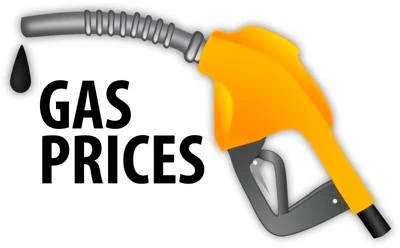
Summer Heat and Supply Deficit Push Gas Prices Up by 30 Cents
By TheNevadaGlobeStaff, August 4, 2023 4:07 pm
Gas prices have undergone a significant shift after months of stagnancy, climbing by 30 cents per gallon. According to AAA, the national gas price now stands at $3.83, marking a 31-cent increase within a month. Although this recent uptick has caught the attention of consumers, it’s noteworthy that gas prices remain below the $5-per-gallon peak witnessed last summer.
Several factors have contributed to this alteration in gas prices. Notably, a supply shortage arising from Russia’s invasion of Ukraine, which disrupted output, combined with OPEC+ members failing to meet their production quotas, has played a pivotal role.
The recent surge in gas prices follows a period of sustained stability, making the 30-cent jump notable. This alteration has been further influenced by meteorological conditions, with a sweltering heatwave impacting much of the United States. The extreme temperatures impeded refinery operations, straining fuel supplies and resulting in elevated prices. However, as the weather cooled down, production began to return to its regular pace.
AAA spokesperson Andrew Gross emphasized the correlation between the heatwave and the gas price spike, noting that refinery operations are gradually returning to normalcy. Gross explained, “Last month’s extreme heat played a role in the recent spike in gas prices due to some refineries pulling back, but now operations are getting back to normal.” He also highlighted the combination of weakening demand and declining oil prices, which may contribute to alleviating the impact of recent supply constraints.
Externally, Saudi Arabia’s ongoing production cuts and hostilities in Ukraine continue to impact supply beyond U.S. borders. As the leader of OPEC, Saudi Arabia recently announced an extension of production cuts by 1 million barrels per day through September. This decision follows a series of cuts over the past year due to falling prices and countries within the alliance failing to adhere to production quotas.
Global oil prices have seen fluctuations as well. Brent crude oil prices recently reached $80 per barrel for the first time since April, signaling a market shift. Despite these changes, concerns regarding high inflation and economic recovery remain pertinent, especially given the ongoing uncertainties.
The Biden administration has also taken measures to influence gas prices. Releasing 180 million barrels from the Strategic Petroleum Reserve since March, despite Russian sanctions and OPEC+ cuts, reflects an effort to curb escalating prices. However, the reduction in supply has led to concerns about energy security and potential implications for domestic output.
While gas prices have stirred concerns, some experts suggest that the recent surge may not be a long-term trend. University of Houston energy fellow Ed Hirs underscored the complexities of the global market and its influence on gas prices. He noted, “We’re dependent on overseas events, and interruptions overseas appear on the corner.”
As drivers grapple with the impact of inflation, the evolving landscape of gas prices continues to be monitored closely. While challenges persist, the hope remains that market fluctuations will ultimately offer relief to consumers’ wallets.
Credits: KTNV
Copyright 2022 702 Times, NV Globe. All rights reserved.




